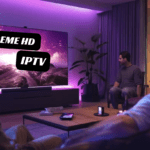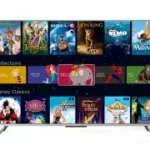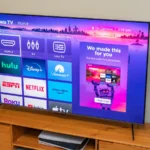Design may have gone digital, but print design remains a timeless and powerful medium for communication. From business cards that create lasting first impressions to eye-catching flyers meant to captivate, print design holds its ground as one of the most effective ways to deliver a tangible message. This article explores the art and science behind print design while highlighting essential elements, tools, and techniques that help designers craft impactful visuals. Whether you’re a business owner, a designer, or someone passionate about design, you’ll discover valuable insights to bring your print projects to life.
What is Print Design?
At its core, Print Design includes any type of design intended for physical mediums rather than digital displays. Unlike web or app design, print design focuses on creating aesthetically pleasing and functional visuals that will be printed on paper, fabric, or other tangible materials. Think of posters, brochures, invitations, and menus—all of these fall within the realm of print design.
The print design process typically involves understanding your target audience, selecting the appropriate format, and using your creativity to convey your message visually. Whether it’s vibrant postcards that spark joy or minimalist product packaging that exudes elegance, print design leverages traditional methods to build meaningful connections in an increasingly digital world.
Why Print Design Still Matters
Despite the ubiquity of digital advertising and online platforms, print remains important for several reasons. Physical materials such as brochures and magazines offer a tactile experience unmatched by screens. Additionally, print design is often perceived as more trustworthy and impactful than fleeting digital impressions. Consider how much more memorable a high-quality printed catalog feels compared to an automated slideshow online.
The enduring relevance of print design highlights the importance of creating thoughtful visual elements that combine artistry and functionality to leave an indelible mark within your audience’s memory.
The Importance of Typography in Print Design
One of the most fundamental aspects of print design is typography—the way letters and characters are styled, organized, and arranged to convey a message. Typography is much more than just selecting a random font; it is a critical pillar for effectively communicating ideas through print design.
Whether you’re designing a poster for a thought-provoking art exhibit or working on a magazine layout, your choice of font can significantly influence the tone and readability of your piece. Serif fonts, for instance, exude a sense of tradition and trustworthiness, perfect for printed books or official documents. On the other hand, sans-serif fonts lean into contemporary, clean aesthetics—ideal for tech brochures or creative portfolios.
Pay attention to balance, line height, and kerning to ensure your chosen typography enhances the overall design. Remember, a poorly chosen or improperly spaced font can undermine the professionalism of even the most striking visuals.
Branding Through Business Cards
One of the most common applications of print design is creating business cards—tools essential in professional networking. These tiny yet powerful assets are not just informational; they also serve as an extension of your brand identity.
For an effective business card, focus on including key information without crowding the space. Add your name, job title, email address, and phone number. Pair this information with your brand’s logo and color palette to give it a polished look. Select durable stock paper to leave a tactile impression, and don’t shy away from adding special effects like embossing, foiling, or rounded corners for added appeal.
High-quality business card designs communicate both reliability and a keen sense of professionalism. It’s your silent spokesperson, doing the talking even after you’ve concluded a meeting.
Designing Breathtaking Flyers
Flyers remain an essential marketing tool for businesses promoting new products, events, or services. An impactful flyer grabs attention and delivers information succinctly.
When designing a flyer, the rule of thumb is to create harmony between eye-catching imagery and structured content. Use bold headlines to highlight key details—such as the name of the event or an irresistible offer—and keep supporting text concise. For visuals, opt for high-resolution images to ensure print clarity, and maintain consistency with brand colors and fonts.
Remember to structure your flyer with plenty of white space to avoid overwhelming the viewer. Lastly, include a clear call to action—whether it’s visiting your website, scanning a QR code, or attending a launch party.
Tools and Software Used for Print Design
Creating visually stunning and error-free print materials requires using advanced design tools. One of the most popular software programs is Adobe Photoshop, which allows designers to edit and enhance images seamlessly. Photoshop is perfect for creating intricate designs or adjusting color contrasts for high-quality prints.
Equally significant is Adobe Illustrator, designed specifically for vector-based artwork. Whether designing logos, patterns, or illustrations, Illustrator offers precision, flexibility, and superior scalability—ensuring your designs look sharp across different mediums.
Lastly, tools for layout and typography such as Adobe InDesign cater to multipage print projects like magazines, books, and catalogs. Its robust features make it a go-to choice among seasoned professionals.
For those seeking free options, programs like Canva or GIMP also allow designers to experiment without committing to premium subscriptions. Familiarity with these tools can help bring your creative vision to life, no matter your budget or level of experience.
Understanding Color in Print Design
Color is one of the most critical factors influencing any effective Print Design. For physical prints, designers often use the CMYK color model (Cyan, Magenta, Yellow, and Key/Black) instead of RGB, which is predominantly used for digital designs. CMYK ensures accurate color replication during the printing process.
Selecting the right color palette can define your audience’s perception of the design. Bright colors like red and yellow evoke energy and excitement, while muted tones like pastels exude calmness and sophistication. You should also consider contrast and balance to ensure readability, especially when working with both text and graphics. Additionally, observe how colors behave under different types of light to avoid visuals appearing dull or too harsh outdoors.
Posters That Speak Volumes
When it comes to reaching a broad audience, few mediums can match the affordability and impact of printed posters. Whether advertising a concert or raising awareness for a cause, great poster design combines bold visuals with concise messaging to drive engagement.
The most successful poster designs follow three principles:
- Hierarchy: Establish a focal point using a compelling image or typeface.
- Simplicity: Avoid clutter and emphasize only the most necessary information.
- Readability: Ensure that fonts can be read from afar, and maintain proper text alignment.
To make your poster stand out further, don’t shy away from unique dimensions, die-cut edges, or combining digital and physical elements like QR codesAn error occurred during generation. Please try again or contact support if it continues.















































